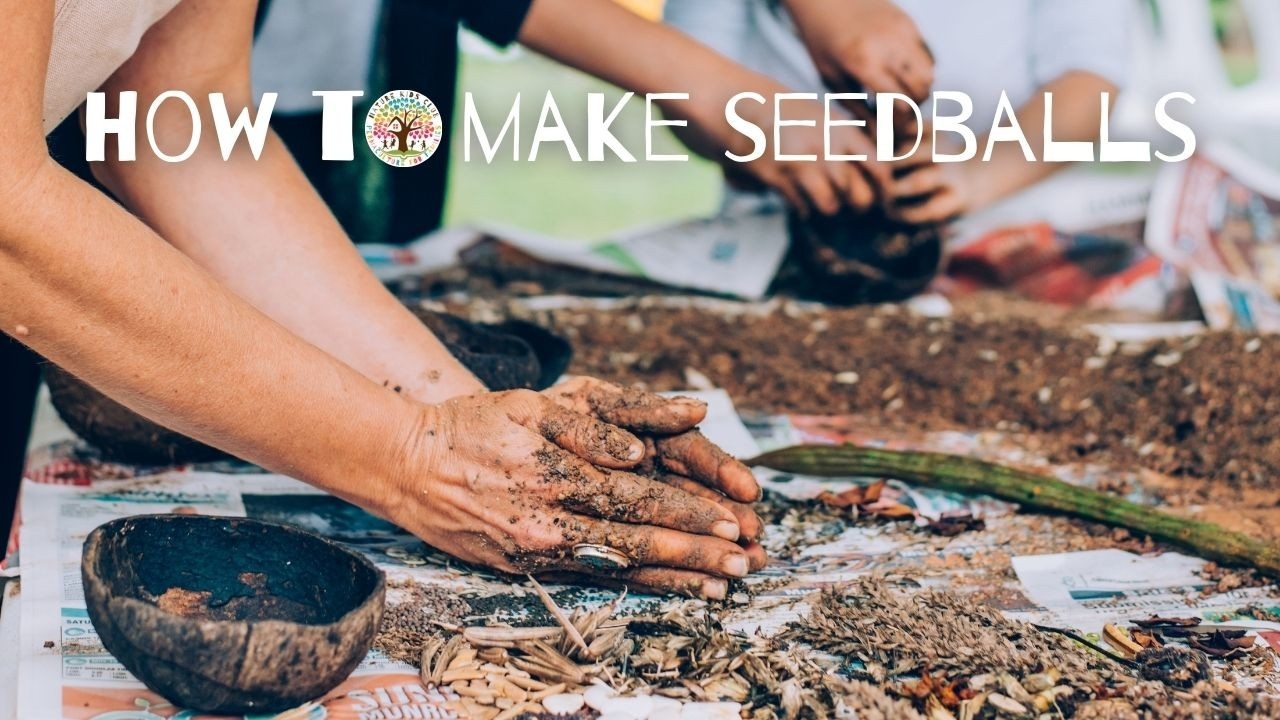How to Make Seed Balls aka Seed Bombs for Gorilla Gardening!
May 19, 2022
Making Seed Balls is an activity that has been an all-time favourite activity for kids and I have literally made hundreds of them with children during various workshops at festivals and during our 'Earth Day' school holiday program. It is tactile and relaxing, with hands full of soil, clay and seeds!
Every year, we feature at the Cairns Eco Fiesta and have even made them alongside Dirt Girl and Charlie Mgee when they dropped by one year to bring some more excitement to our workshop space! We have made as many as 546 Seedballs with the help of our Earth Carers!
I have a link to a how-to video below but first read through these details for some insight...
So what is a Seed Ball?
It's a marble-sized ball made of clay, compost and seeds. They are a little protected package of potential, with the benefits of storing the seed with the nutrients they need to grow (when water is added) and also protecting the seed from birds or other animals that would usually eat seed off the ground.
How does it become a Seed Bomb?
Guerrilla gardeners use these seed balls as bombs to throw into vacant plots or spots in the garden and allow a surprise garden to emerge when the conditions are right. This means when there is enough rainfall, the clay softens and the seeds germinate with the power of the compost within and the sunshine above. In this instance, it is important to consider the seeds you use so that whatever grows does not become invasive in wild or neglected land spaces.
It is a great demonstration of the permaculture principle of "using and valuing renewable resources" and getting into the habit of seed saving by tuning into the plants in your area and noticing when they are producing seeds for collection. Seed Balls In Your Garden...
Seed Balls In Your Garden...
They can also be placed carefully in your specific garden in a more thoughtful manner as an easy way to make a garden with a guild of plants ~ the mix of seeds you put in the balls. A guild is a beneficial group of plants that grow well together, so consider the types you choose.
Choosing Seeds
Flower seeds are always great to use because they help bees with pollination. Sunflowers and marigolds are flowers that produce a lot of seeds and are easy to seed save. My favourite guild is papaya seeds, a bean seed like snake bean, plus sunflower, marigold and pigeon pea. Cherry tomatoes are yummy surprises too!
Make Your Own Guild
Have a think about an /easy to grow a fruit tree' to plant in your area ie Papaya in the tropics, plus an easy to grow legume (bean) and flowers that take up different levels like ground cover or bush and another that is taller, like a sunflower. We have a 'food forests and plant a guild' lesson in our program that explores this in much more detail. Essentially, use the seeds that are an available resource in your area.
*Consider which plants could become weeds easily stay clear of them. We are intending on regeneration, not spreading weeds!
Seeballs and Birthdays
This game is great as a down-to-earth party game with a group of kids. Think birthdays! In our program, we provide printable resources to learn and colour in with additional recipe gift tags to share with others. You could make some as gifts ready to be planted, or provide a jar of all the ingredients so they can DIY with the instructions.How to Make Seed Balls?
The instructions are listed in the Seed Bomb Recipe (below) with ingredients needed and easy steps included. Check out our video Make Seed-bombs or Seed-balls to Grow Gardens to learn about clay collecting, mixing with compost and setting up for a workshop.
TIPS
- A trestle table is usually a good height to use as a workbench, especially with a few kids working together.
- Place newspaper down to prevent clay sticking from sticking to the table.
- Have a bucket with water set aside for easy hand washing.
- Collect seeds together over a period of time by storing them in containers and labelling them.
- Save egg cartons for the seed bombs drying and storing.










